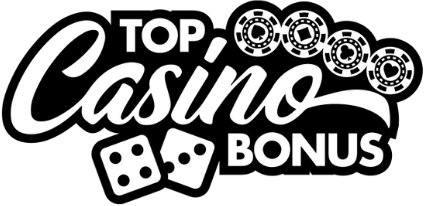Reading your opponents in live casino poker (basic tells)
Reading opponents in live casino poker isn’t just about watching their cards, it’s about watching them. One of the biggest mistakes I see from newer players? Getting overly fixated on their hand strength while being completely blind to the goldmine of information sitting across the felt. If you’re not paying attention to physical tells, changes in behavior, or betting rhythms, you’re playing with one eye shut.
Table of contents
Why live poker is a different beast
Online, all you’ve got is bet sizing, timing patterns, and maybe a chat box if they’re sassy. But in a live casino setting, especially at established spots like 888casino, you’ve got full-bodied humans giving you more signals than a telegraph wire during a thunderstorm. And yet, many don’t know how to read a soul.
The real battlefield is behavior
Let’s kick modern myths to the curb. Flashy sunglasses and hoodies? They only mask the basics. The truth is, experienced players look past the cover and pay attention to microexpressions, voice tone during conversation, and muscle tension. Some of the most telling signs don’t come from your opponent’s mouth, they come from their throat, hands, and feet.
Common physical tells to watch for
Let’s get to brass tacks. Here are the foundational poker tells that even amateur players often telegraph. But don’t just memorize them, learn how to contextualize each one. A tell means nothing without surrounding behavior.
1. Shaky hands
You’d think a tremble means weakness, but usually, it means strength. That adrenaline isn’t fear; it’s excitement. If someone’s nervous about bluffing, they’ll go still. What exposes them? Sudden shifts from calm to active when their hand gains power.
2. Chip handling
Players who’ve got a monster hand often splash their chips confidently, without theatricality. It’s instinctual. Weak hands? You’ll see hesitant, uncertain betting, chip fiddling, stalling, splashing out inexactly. I once busted a guy bluffing big just by watching him measure his bet three times like he was taking blood pressure.
3. Facial cues
Lips tightening. Pulse ticking like a watch under the skin of the neck. Mouth breathing. Dilated pupils. They sound small, but these cues scream nervous tension. You spot them by staying calmly observant, not hyper-focused like a robot, but tuned in like a hunter.
4. Talking
Loose lips sink ships. When someone starts volunteering chatter out of the blue, they usually want to keep you comfortable, because it’s a bluff. But if someone with a strong hand suddenly clams up, that shift can be louder than any spoken word.
Behavioral patterns beyond the cards
The deeper layer to tells? Reactions to interaction. Ask yourself: how does this person behave when they win, and how when they’re unsure? Once you’ve dialed in their baseline, the slightest deviation becomes a neon flag waving in the wind.
The calm-to-hype ratio
Most folks have baseline energy levels. Watch how players act during routine pots, then compare them when the stakes go up. A bombastic player suddenly quiet? Something big. A reserved player now acting like carnival barker? Likely air.
Immediate hand-checking
Let’s not overcomplicate this. When the board flops three of a suit and someone snatches a look at their hole cards, they’re checking for the flush, plain and simple. It sounds like amateur hour, but even seasoned folks slip into habits when adrenaline kicks in.
The cost of ignoring live intel
All the pot odds, position theory, and GTO strategies don’t mean squat if you’re ignoring live data. Poker’s not just math, it’s mental jiu-jitsu. And one of the harsh truths? Most players are giving away free info on every hand they play. They just assume no one’s watching.
Why position still matters
Reading tells is powerful, but you know what’s better? Reading tells while acting last. If you’re still hazy on why acting last is pure gold, go study the importance of position in Texas Hold’em. Observing from the button or cutoff gives you the clearest lens on behavior shifts under pressure.
Case study: a cold read at 2 AM
One night, back in Atlantic City, I was deep in a no-limit cash game with a regular we’ll call Sanchez. We’d been playing for hours. Around 2 a.m., board runs out K-8-8-10-2. Sanchez looks down, smiles subtly, bets big. Everything in his line screamed strength, until I noticed his left leg. Slight bouncing. He hadn’t shown movement in hours.
I pushed all-in. He tanked for 5 minutes, then folded. Turns out he’d been bluffing with queen-ten. That leg tick was his only tell, but you better believe I picked up on it because I’d been tuned in since the first hand of the night. That fold funded my week.
Modern tools and how they cloud true instincts
These days, too many players rely entirely on solvers, training apps, and coaching packages. Don’t get me wrong, I’ve studied them too. But no digital course teaches timing tells or respiratory shifts. That’s why so many sharp online players crumble when they step into a live setting.
If you want to train muscle memory for tells, you can start small, even on lower-stakes live tables or practice rooms on various reviewed online casinos that offer live dealer setups. Some of those cams are high-def enough to reveal posture shifts, especially once you’re paying attention.
Where your edge really comes from
Think this: If two players both play statistically optimal ranges, but one player reads the opponent’s anxiety, relaxation, and deception through body cues and subtle shifts… who walks away with the chips?
Bonuses and bankroll fuel
Building a poker bankroll for live games doesn’t always have to start from scratch. Take advantage of casino bonuses to pad your pockets before hitting the felt. Every bit counts, and sometimes it’s that extra edge that gets you another seat at the table.
Sharpen your non-verbal senses
Reading tells doesn’t end at poker. Ever played a long session of blackjack against live dealers? You’ll start to notice the rhythm of shoe changes, eye contact during double downs, even timing tells when pit bosses linger. Trained observation works across tables.
Final wisdom: don’t just play the game, read the room
You could memorize every chart, every combo, every pot odds equation known to man. But if you sit down at a live table and forget to watch your opponents, really watch, you’re giving up the best weapon in your arsenal.
The house always counts cards. But the sharp player counts heartbeats, breath patterns, and performance shifts. Learn to read people, not just math. That’s when you stop playing poker, and start hunting for chips like a trained predator.





0 Comments